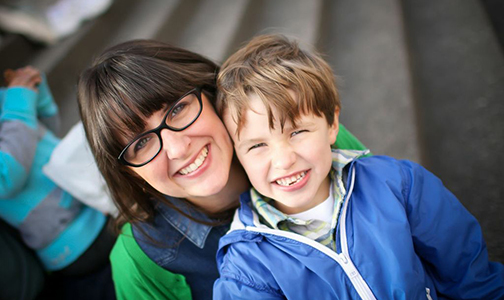Thoughts from Guest Blogger, Julia Fain
Design inspiration and creative motivation most often stems from observing real-world challenges and solutions. Friend of Cloudberry Studio, Julia Fain, shares some key insights on raising an autistic child from the perspective of a designer. This is the first of two articles from Julia.
When I was asked to share a little about autism and how it affects our family I was all in. My background is in product design and I constantly see ways that businesses could make transitions easier for children on the spectrum. Our son was diagnosed with PDD-NOS on the spectrum by a developmental pediatrician at age four. At that point we had been in speech therapy for a year and a half, with some occupational therapy for picky eating and sensory integration. More recently he has been documented with high functioning autism, similar to Aspergers.
A lot of what I do day today with Bryce involves prep work. I give him a plan, usually three or four things. He is very happy with that but once the plan is set there isn’t room for much deviation. I keep our days pretty basic, I pick grocery stores and libraries and parks that he is familiar with and we have good experiences with. I only try new museums and malls with the support of my husband, especially because I also need to watch his younger sister. This is because he tends to wander in new environments (so much to look at!) and in case he has a meltdown.
Bryce is highly visual, so I often try to do prep-work with photos. Before we started swim lessons I went to the pool-site and took pictures. I then went home and showed Bryce, so the visual picture in his head would be in line with reality. The internet really helps with this. Last fall we took a trip to a cabin in Wisconsin, and he cried a good bit that first day because the logs were vertical instead of horizontal. This summer when we went to the beach I was sure to first show him website photos of our motel and overhead maps. He was all joy when we arrived at the beach motel. And one thing I know Bryce really loves: maps. Visual way-finding maps paired with visual storyboarding is a non-auditory way to communicate with him and it works really well.
Technology is also very very appealing to Bryce. This is often used in wait rooms, which does bring comfort, but it is can also be very hard to transition away from when it is time to leave, or go to an appointment. Fish tanks are a nice alternative. They are soothing to watch, have a mild sound, and aren’t as hard to transition from, at least in my experience!
Photo credit: Jenny Rigney http://